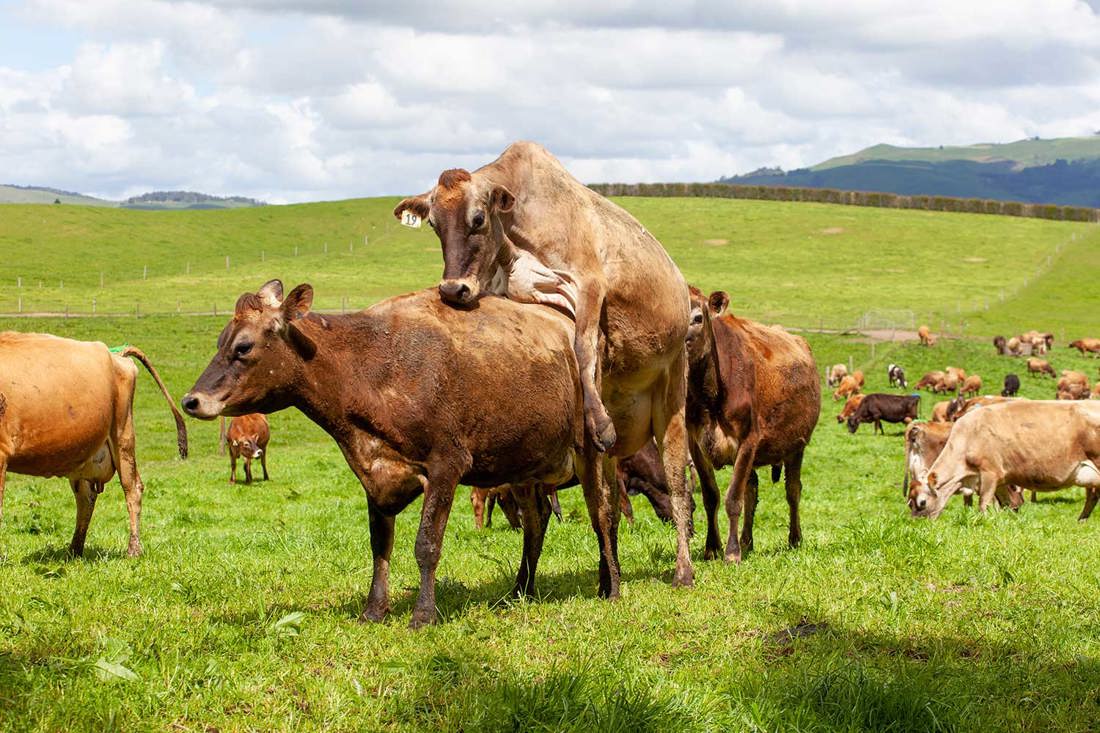Inbreeding
3 min read
Inbreeding in cattle occurs when an animal's inherits identical DNA is identical because it comes from a common ancestor on both parents' sides. Inbreeding can unmask harmful mutations and negatively affect an animal’s performance, but it can be minimised by preventing mating between related animals. Inbreeding can also bias Breeding Values if not correctly accounted for within a genetic evaluation system. Discover more below about managing inbreeding during mating.
Animals inherit half of their genetic material (DNA) from their mother and the other half from their father. Inbreeding refers to the proportion of an animal’s identical DNA inherited from a common ancestor that existed on both their mother’s and father’s sides of the pedigree.
Inbreeding causes a measurable negative impact on cattle performance. Inbreeding will not exist if the sire and the dam do not share any near or distant ancestors. Therefore inbreeding can be minimised by avoiding matings between related animals.
Inbreeding results in a negative impact on a cow’s profitability through a performance reduction in:

Inbreeding is measured using inbreeding coefficients. These estimates are calculated from an animal’s recorded pedigree and represent the probability of genes being identical due to shared parentage. The coefficient provides a general estimate because it is based on pedigree rather than an exact figure.
Inbreeding is calculated as half the additive genetic relationship between the parents. This is because each parent contributes half their genes to the offspring.
For example, a father and daughter share half their DNA, so have an additive relationship of 50 percent. Offspring generated from a father-daughter mating would have an inbreeding estimate of half of this, that is 25 percent identical DNA.
This is an estimate because in a father-daughter mating the expected inbreeding is 25 percent, but individual offspring might inherit slightly more or less DNA.
Other examples (also shown in the table below):
| Relationship | Inbreeding Coefficient (%) * |
| Animal mated to its own parent (e.g. sire & daughter) | 25% |
| Mating between full brother and sister (i.e. share both their sire and dam in common) | 25% |
| Mating between half brothers and sisters (share either a sire or a dam in common) | 12.5% |
| Animals have a single great-grandparent in common | 3.1% |
Inbreeding increases the likelihood of genetic mutations being expressed in offspring. When related animals mate, there is a higher chance that both parents carry the same recessive mutated gene from a common ancestor. If the offspring inherit two copies of this recessive gene, it can result in impaired functions and genetic disorders.
Over time, the accumulation of these genes can lead to inbreeding depression, characterised by reduced health, fertility, and overall performance.
Inbreeding depression: is a population’s reduced ability to survive and reproduce.
Inbreeding can impact any trait and produce lower-performing offspring than expected. However, in most cases, the expected performance of future offspring, born from inbred parents, can still perform well if further inbreeding is avoided.
Animal evaluation adjusts breeding values by removing the effects of inbreeding depression on the inbred animal. The adjustment ensures the breeding values reflect the true genetic potential of an animal, not the reduced performance due to inbreeding.
If a daughter has been inbred, her results will not truly reflect the potential performance of her farther. This means that for daughter-proven sires, breeding values are adjusted to prevent bias from underestimation due to poorer performing inbred offspring. Daughter-proven sires are bulls that have proven reliable and consistent performance results based on the performance of their daughters.
Managing genetic relationships within herds can minimise the risks associated with inbreeding and maintain the genetic health and productivity of stock. Inbreeding will not exist if the sire and the dam do not share any near or distant ancestors and can be minimised by avoiding mating between related animals. Your artificial breeding company has programmes to help you avoid inbreeding.
Research recommends that animals who share more than 6.25 percent of their genes should not produce offspring. This is equivalent to the same gene profiles found in first cousins.
Now’s the perfect time to check in, plan, and set up for a strong season. We’ve pulled together smart tips and tools to help you stay ahead all winter long.
Whether you prefer to read, listen, or download handy guides, we’ve got you covered with trusted tools to support your journey every step of the way.